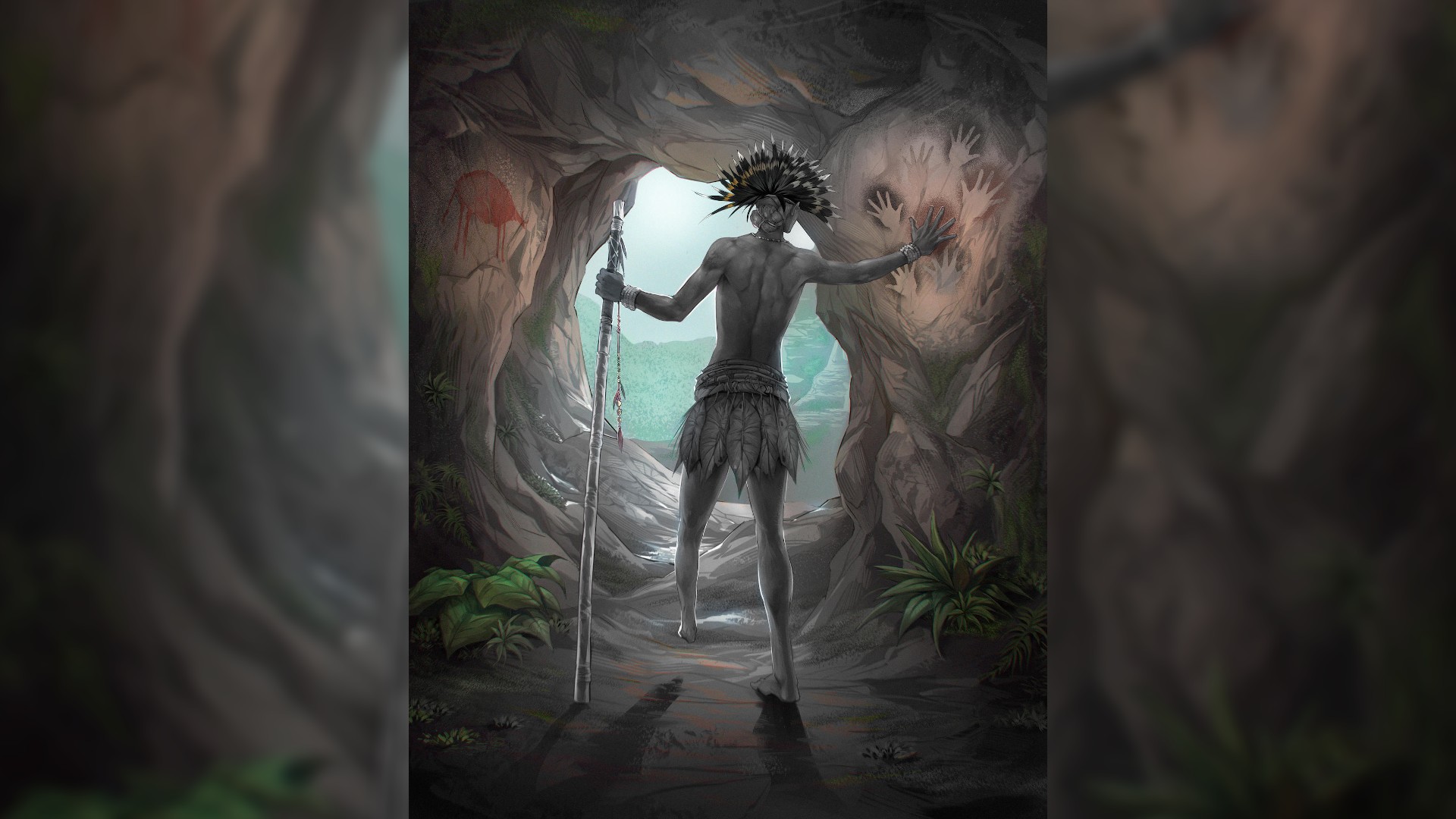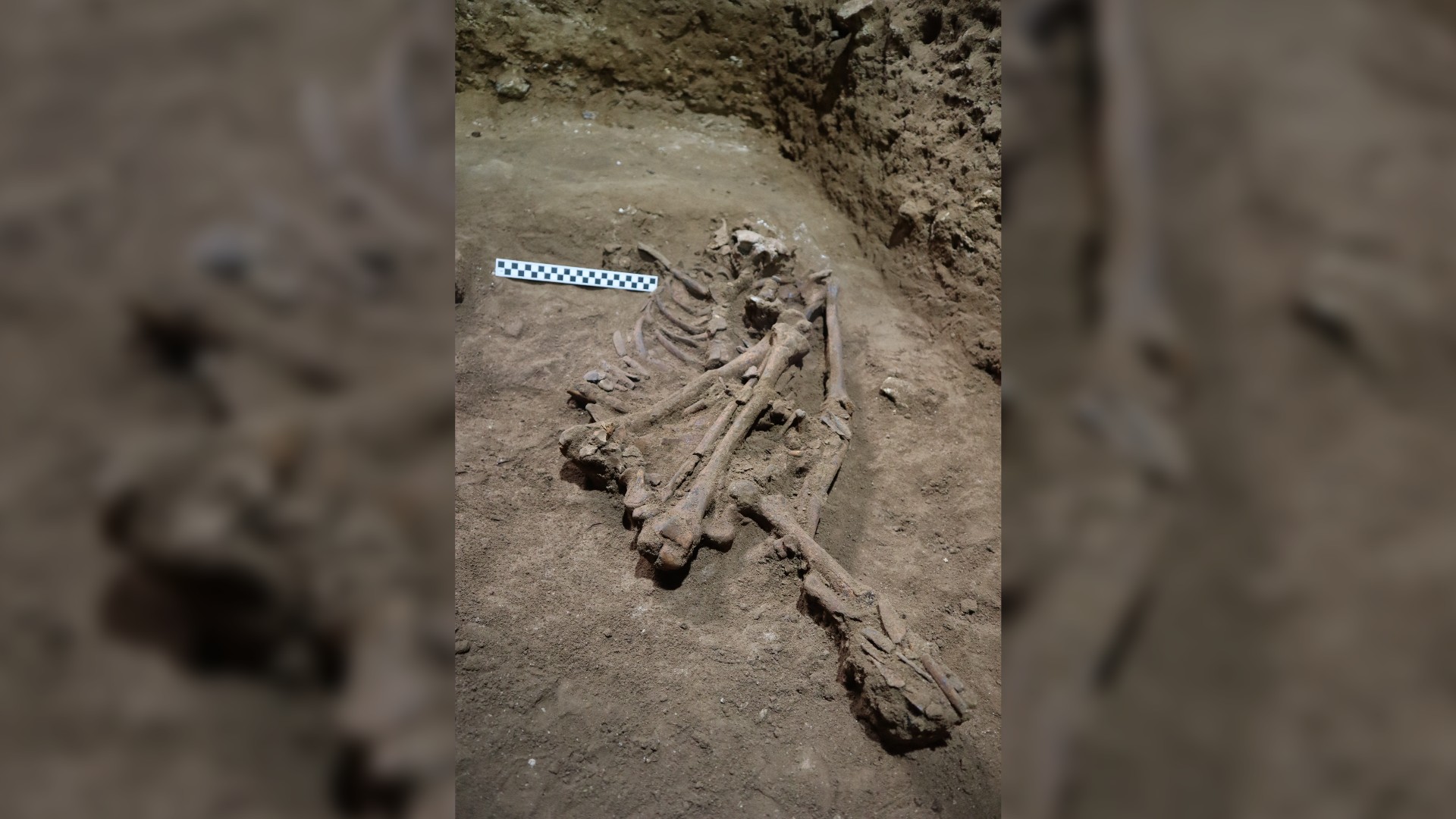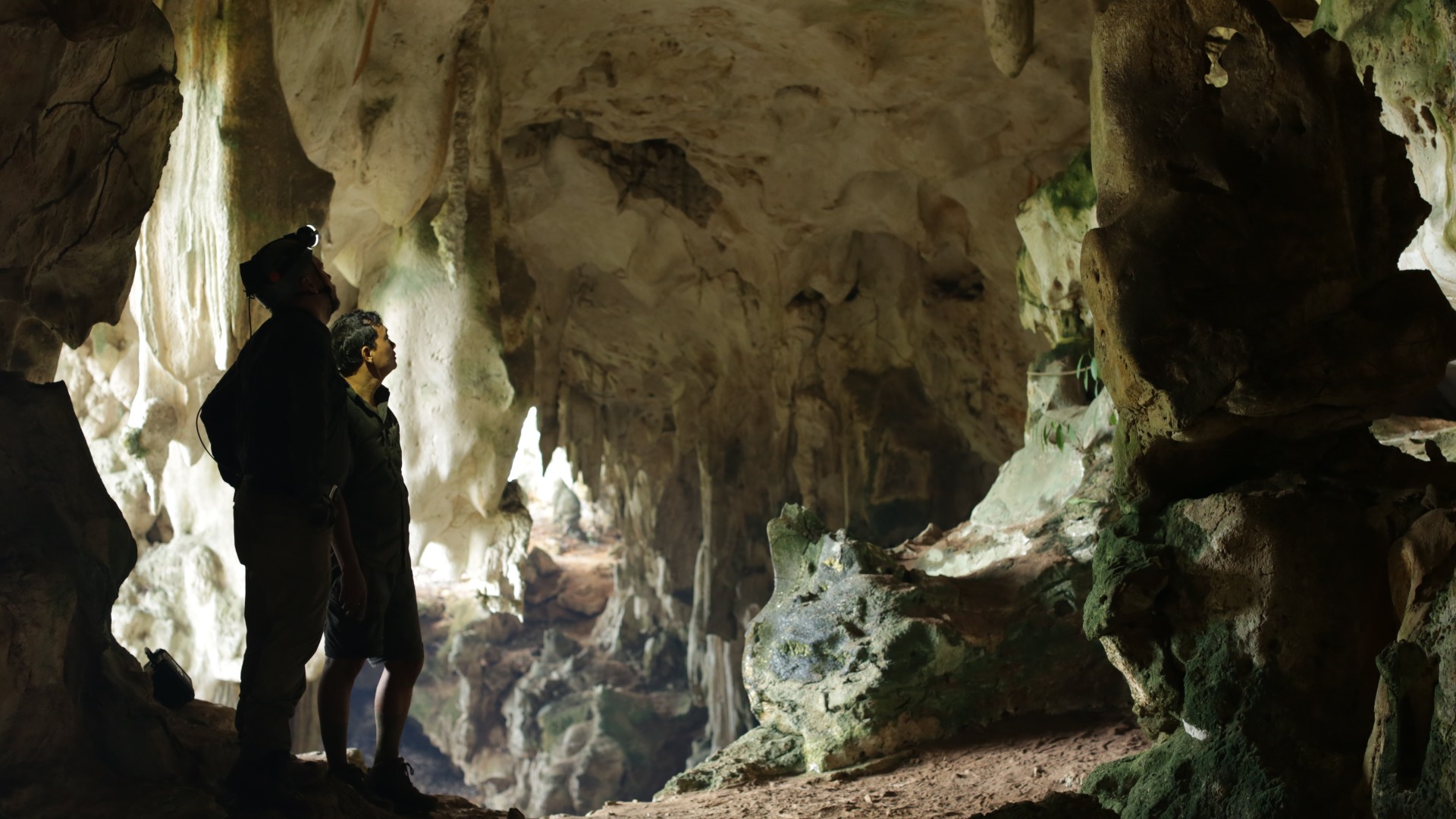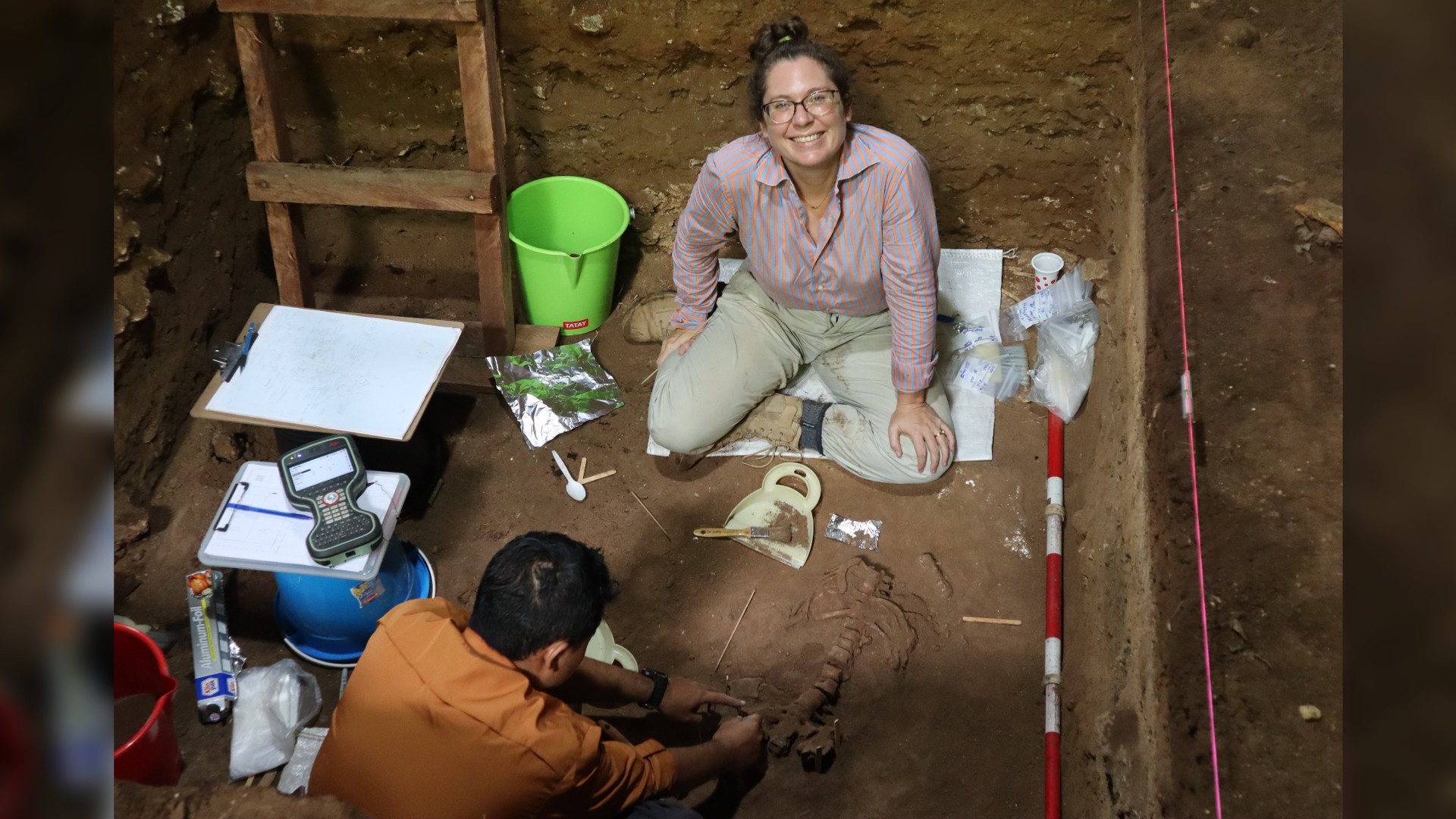Oldest medical amputation on record was performed on a Stone Age child in Borneo 31,000 years ago
The early removal of a leg was performed on a young hunter-gatherer.

About 31,000 years ago, a skilled prehistoric surgeon cut off the lower leg of a child hunter-gatherer in Borneo. Now, archaeologists have concluded that this ancient surgery is the earliest medical amputation on record.
The skill of the Stone Age surgeon was admirable; the patient went on to live an additional six to nine years after the surgery, a radiocarbon dating performed by researchers of the individual's tooth enamel revealed, according to a study published online Wednesday (Sept. 7) in the journal Nature.
"It was a huge surprise that this ancient forager survived a very serious and life-threatening childhood operation, that the wound healed to form a stump and that they then lived for years in mountainous terrain with altered mobility," study co-author Melandri Vlok, a bioarchaeologist and postdoctoral research associate at the University of Sydney," said in a statement. "[This suggests] a high degree of community care."
An international team of archaeologists discovered the youth's skeletal remains inside a limestone cave known as Liang Tebo on the Indonesian portion of Borneo during an archaeological excavation in 2020. The cave is remote, and accessible by boat only at certain times each year, the researchers said.
Related: Dozens of decapitated skeletons uncovered at ancient Roman site in England
The skeleton's lower leg, including the foot, were "removed through deliberate surgical amputation" and "tell-tale bony growths related to healing" suggest that the limb was surgically amputated, and not the result of an animal attack or some other tragic accident, according to the statement. Archaeologists haven't determined why the child's leg had to be amputated.

Prior to this find, the earliest evidence of an amputation on a human involved a 7,000-year-old skeleton of an elderly male Stone Age farmer, whose left forearm had been surgically removed, according to a 2007 study published in the journal Nature Precedings.
Sign up for the Live Science daily newsletter now
Get the world’s most fascinating discoveries delivered straight to your inbox.
Before that time stamp, scholars thought that humans lacked the knowledge and tools needed to successfully perform complex surgeries, which often involves navigating a network of blood vessels, nerves and muscles. However, this finding reveals that humans "must have had detailed knowledge of limb anatomy and muscular and vascular systems to expose and negotiate the veins, vessels, and nerves and prevent fatal blood loss and infection," according to the new study.



"What the new finding in Borneo demonstrates is that humans already had the ability to successfully amputate diseased or damaged limbs long before we began farming and living in permanent settlements," study co-author Maxime Aubert, an archaeologist and geochemist at Griffith University in Australia, said in the press release.
Researchers did caution that it's too soon to tell if the Borneo operation was an isolated example of amputation or if surgeons performed similar, contemporary procedures on the island, elsewhere in Asia or even around the world. However, surgical amputations as we know them today didn't become common practice until Joseph Lister, a British surgeon and scientist, discovered antiseptics during the late 1800s, according to Encyclopedia Britannica.
"In light of the much younger age of these prior findings, the discovery of a 31,000-year-old amputee in Borneo clearly has major implications for our understanding of the history of medicine," study lead author Tim Maloney, a research fellow of archaeology at Griffith University, said in the statement.
The discovery is the latest that hints at what the lives of ice age foragers could have been like in Indonesia, "as demonstrated from the early dates on cave art in Borneo and the adjacent island of Sulawesi," study co-author Adhi Agus Oktaviana, a doctoral student of archaeology at Griffith University based in Jakarta at the Centre for Archaeology, Language and History, said in the statement.
Originally published on Live Science.
Jennifer Nalewicki is former Live Science staff writer and Salt Lake City-based journalist whose work has been featured in The New York Times, Smithsonian Magazine, Scientific American, Popular Mechanics and more. She covers several science topics from planet Earth to paleontology and archaeology to health and culture. Prior to freelancing, Jennifer held an Editor role at Time Inc. Jennifer has a bachelor's degree in Journalism from The University of Texas at Austin.










